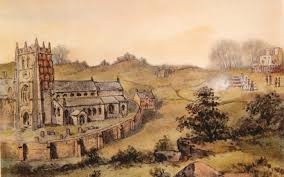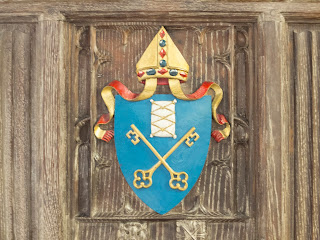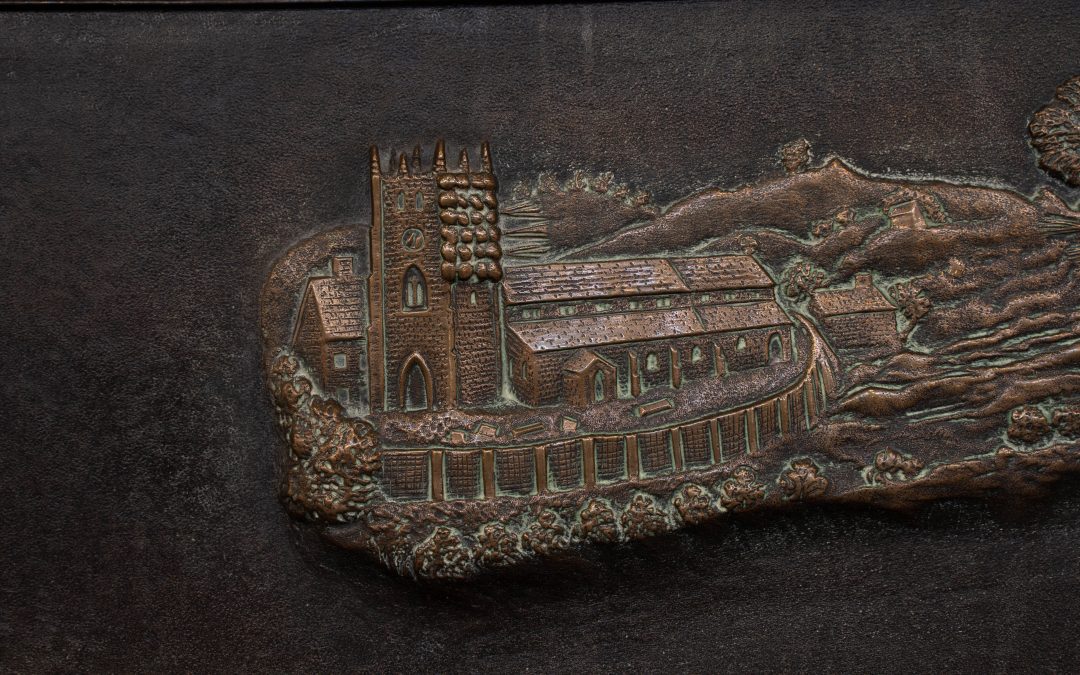Saint Peter’s keys, the Bishop’s mitre and the wool bale.

Wherever you go in the Cathedral you will see the coat of arms. It tells you clearly that you are in a place dedicated to Saint Peter (the crossed keys – the keys to the Kingdom of Heaven), that the church is a cathedral (the Bishop’s mitre – hat) and that the Cathedral is in Bradford (the Bradford wool bale). It is an image that tells us a lot about Christian belief and practice and also reminds us of a little known story from Bradford’s past.
A Bishop is a man or a woman who is a priest, but who has responsibility for all the churches in an area, (diocese), the people who worship there (congregations) and other clergy (priests). If the Bishop is at a service in the Cathedral he or she wears a special hat so that everyone knows who the Bishop is. This is called a mitre.The Parish Church of Saint Peter, became the Cathedral Church of St Peter in 1919. 2019 marked the centenary of Bradford Cathedral.
Saint Peter lived 2,000 years ago in the country now known as Israel. He was one of Jesus’s friends. Peter means ‘rock’ and Jesus said that Peter was the rock on which he would build his church (Matthew 16:18). He also said that he would give Peter the keys to ‘The Kingdom of Heaven’ (Matthew 16:19). Saint Peter is often referred to as the first Bishop, he became the leader of the early Christian church in Rome. A saint is someone who is accepted as being a good role model for other people, someone who tried to live their life as a good Christian.

The sheep in the Yorkshire Dales, including what was Bradford Dale, have long provided wool that was in the 18th, 19th and early 20th centuries, turned into the high quality woollen cloth and clothes for which the City became famous. However wool was central to Bradford’s economy long before this.
During the English Civil War (a war between the King’s Army and Parliament’s Army) in the 17th Century, Bradford was on Parliament’s side. In 1642 the town came under attack twice from the King’s Army. On the second occasion the Army was based at the top end of Barkerend Road. The people had very little with which to defend the town, but they did have bales (a bale is like a huge cloth sack) of wool from the areas’ sheep, with which to protect the most important building – the Parish Church. They hung these around the steeple (the bell tower) to protect it from canon fire. This became known as the Battle of the Steeple (December 18th 1642). The wool bale features on the Cathedral’s Coat of Arms, as the bales of wool were instrumental in defending and protecting the church.

